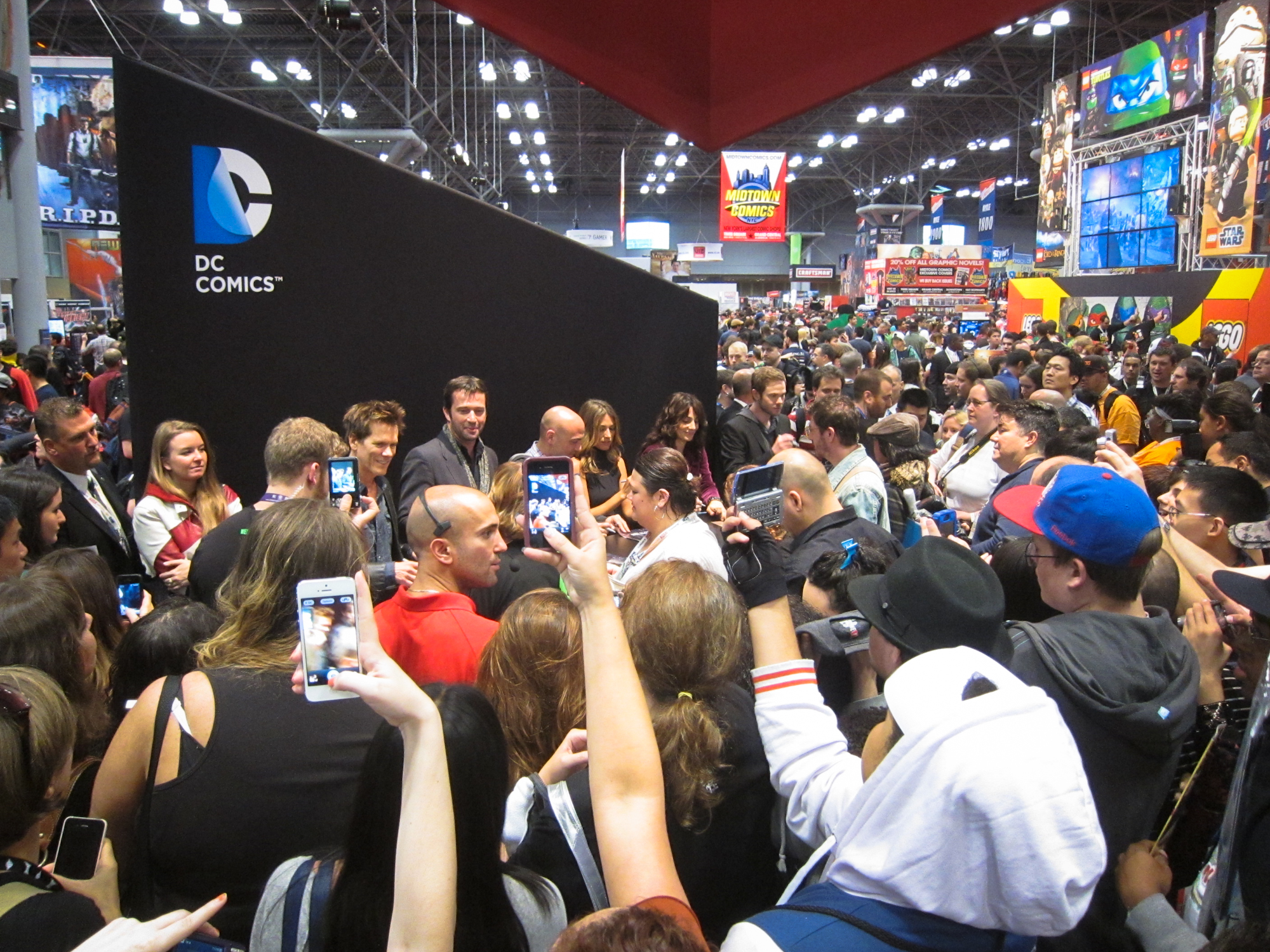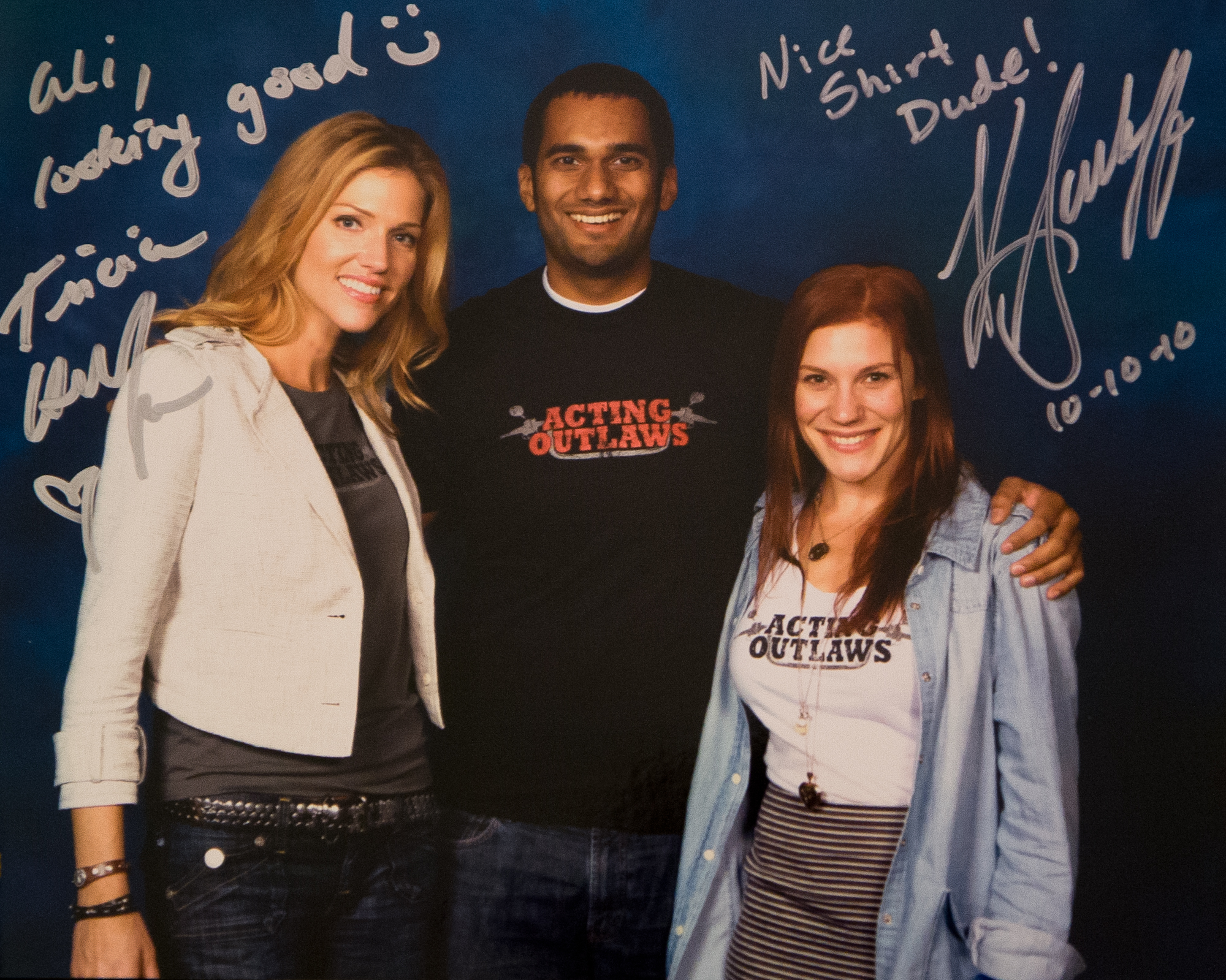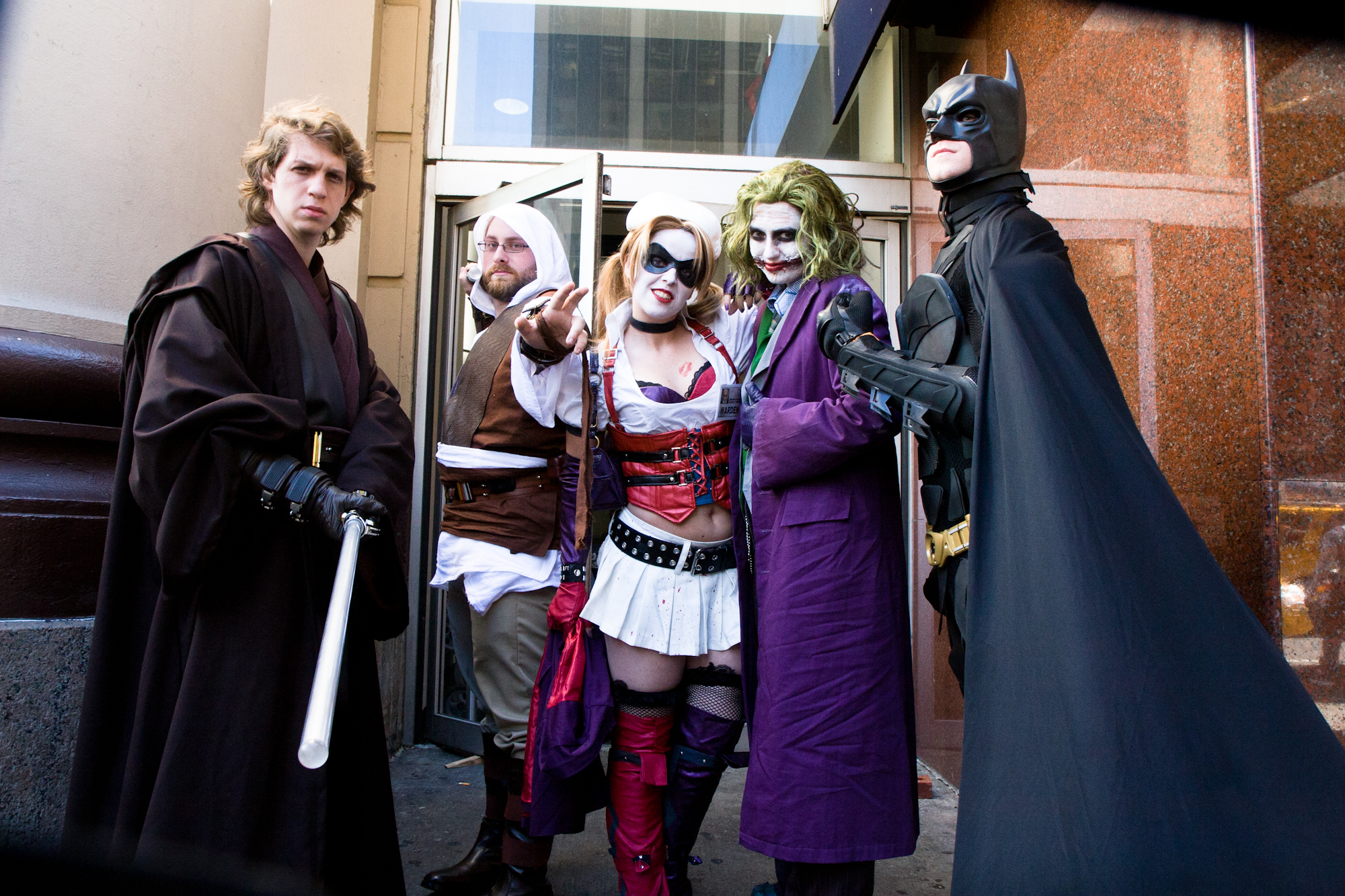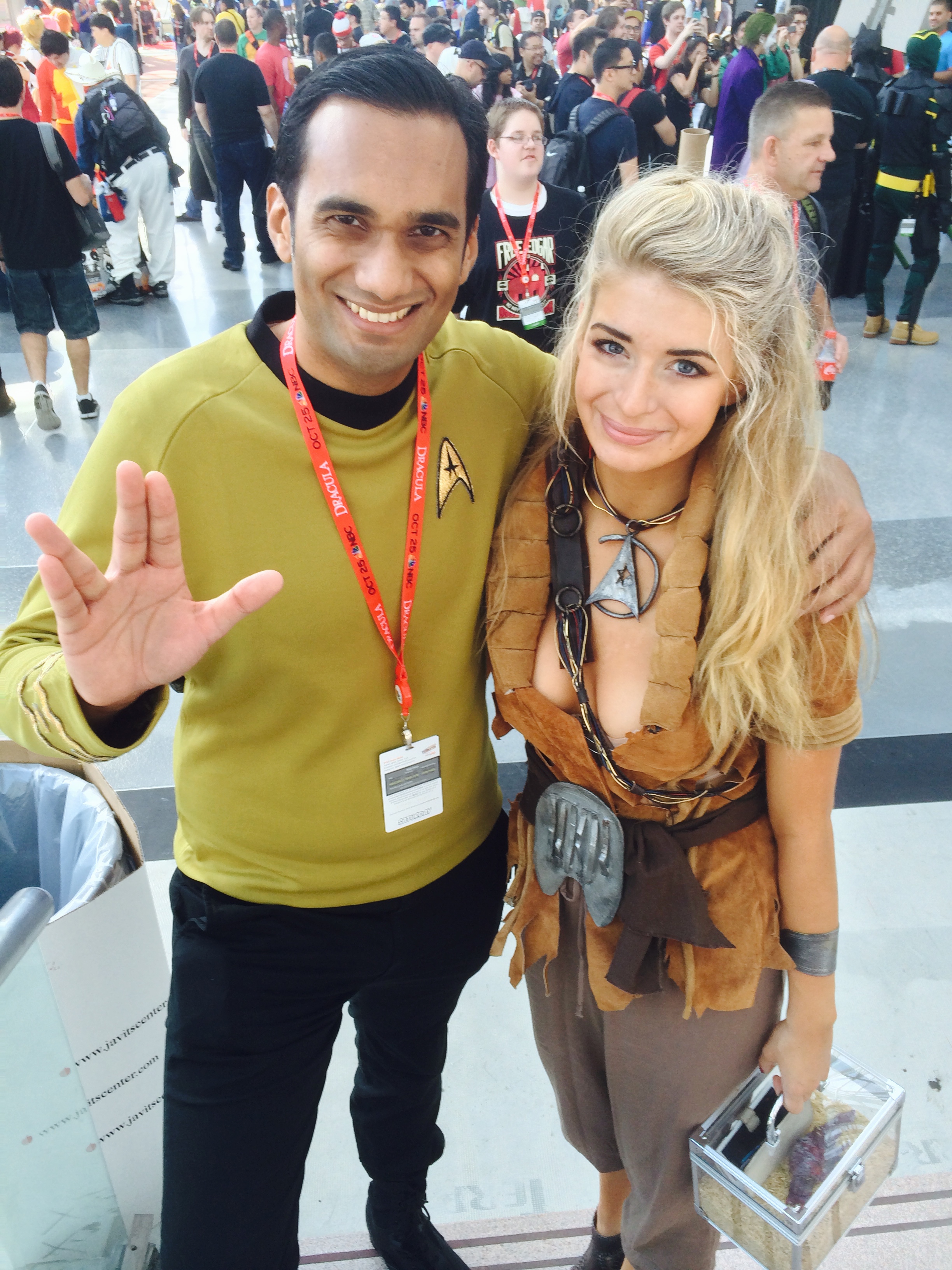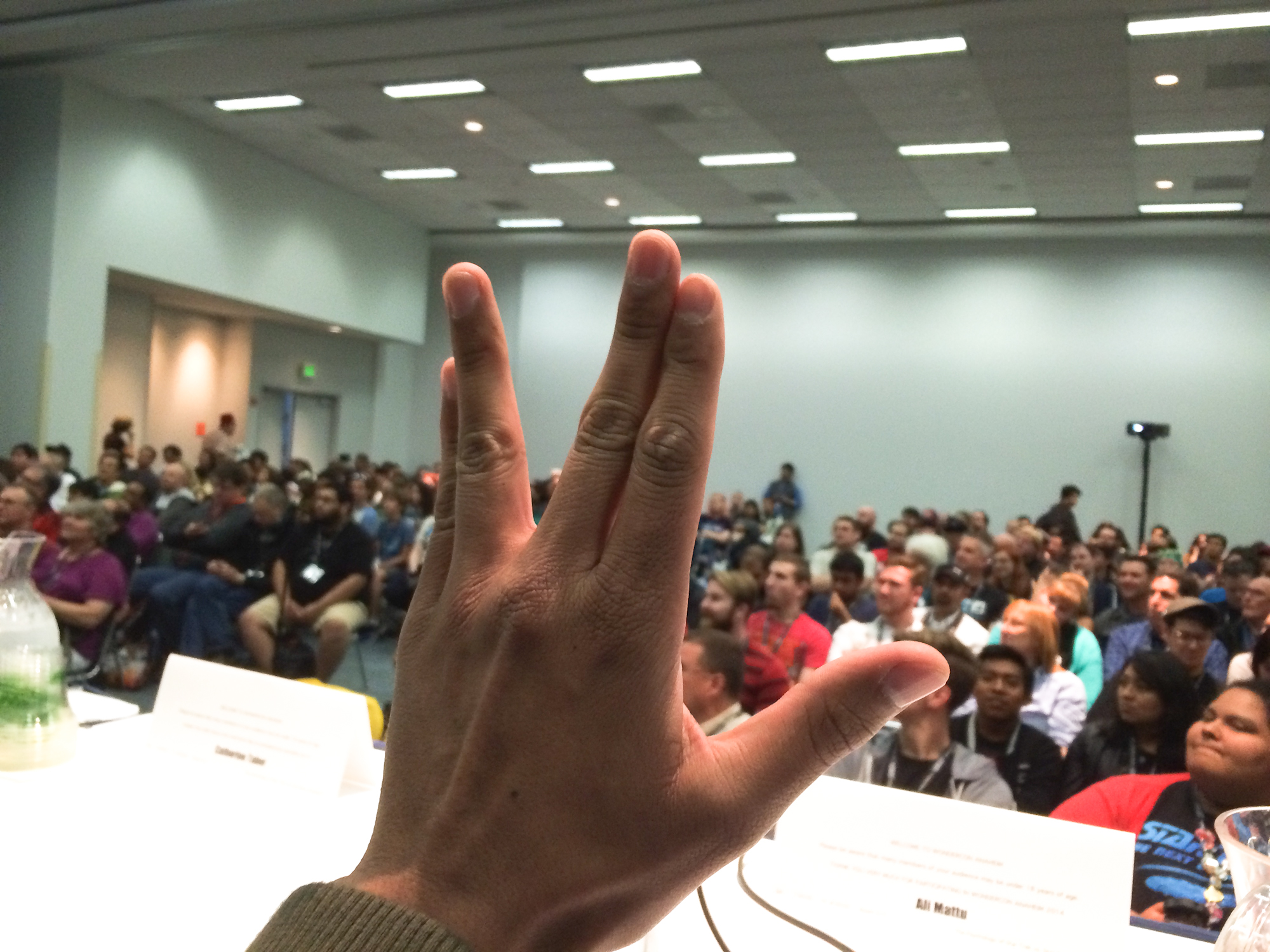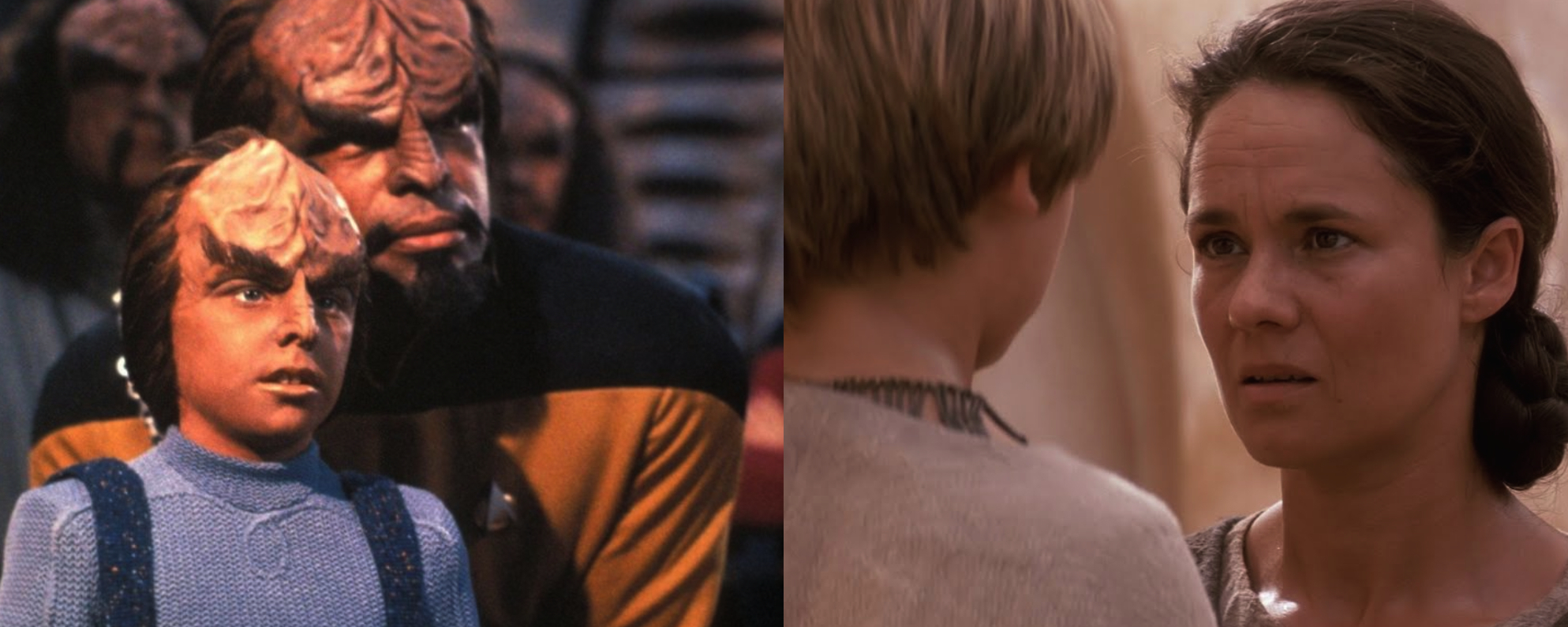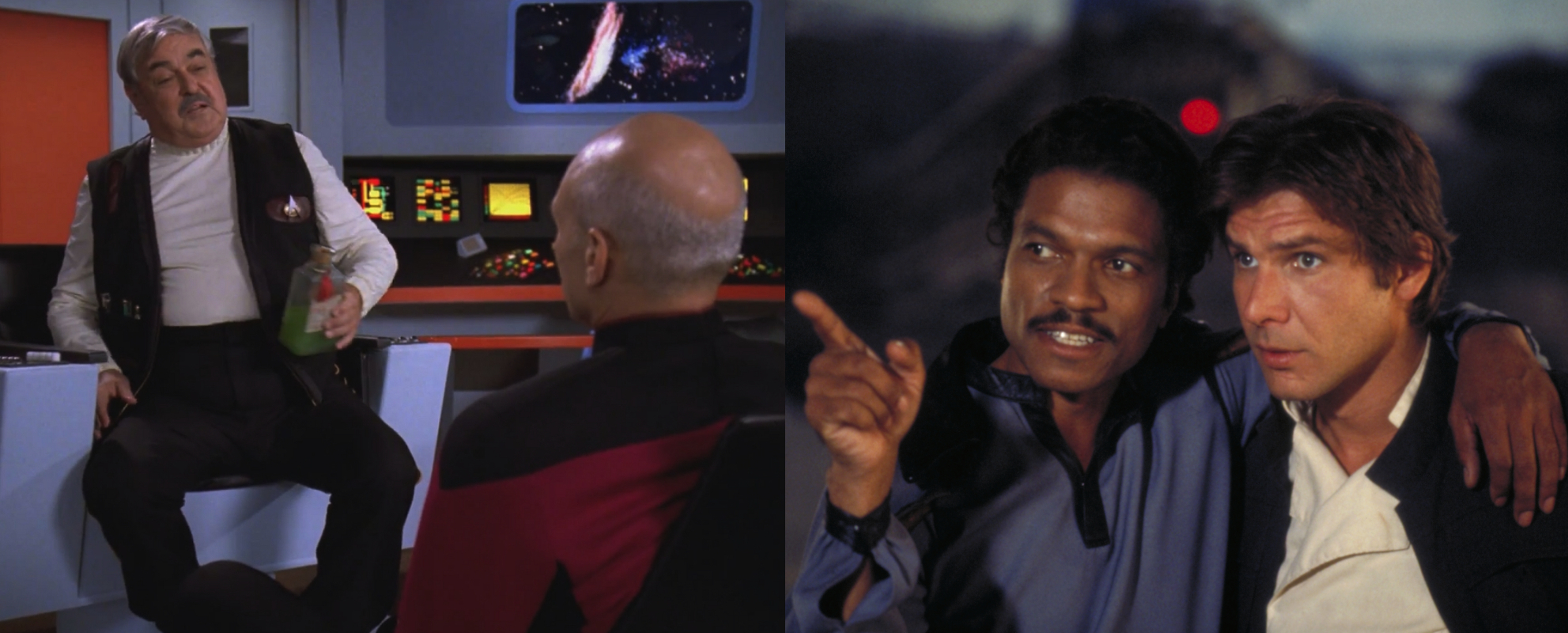Edge of Tomorrow is the worst marketed film of the summer. It dropped the source material's awesome name, All You Need Is Kill, and its trailer was super depressing. The only thing the film had going for it was the star power of Emily Blunt (she was great in Looper) and the vision of Doug Liman (loved his Bourne triology).
Then there's the Tom Cruise issue. I grew up on Cruise's films (Top Gun, Mission: Impossible, Minority Report) but it's hard for me to support a guy who outright denies the science of psychology and rejects the treatment of mental illness.
Why did I see Edge of Tomorrow? As I mentioned a few weeks ago, I'm a sucker for time travel paradoxes.
A Surprisingly Fun Film
Emily Blunt uses a scifi sword against an alien in Edge of Tomorrow.
Despite all of that baggage, Edge of Tomorrow works. It’s got a fun déjà vu premise with the main character, Cage, reliving the same day over and over (like Groundhog Day, Star Trek: The Next Generation's "Cause and Effect", and Source Code). What's new is the way events are re-experienced. Things unfold much like a video game. Cage fights aliens, dies, restarts a level, and gets a little bit farther in the battle before dying and respawning again. The action is fun, Blunt’s character kicks a lot of butt, and it’s great to see Cruise play someone who isn't (at least at first) the traditional Cruise action hero. There's also lots of humor sprinkled throughout the film. My only complaints are the film’s boring final boss battle and forgettable score (they should have just used the Halo soundtrack).
How Memory Works
Tom Cruise's Cage begins the film without any knowledge of fighting a war.
The psychology of Edge of Tomorrow is also a fun thought experiment. I'm not talking about the exosuits (check out Nerdist for more on that). I was more interested in the film’s depiction of memory. If you accept the premise that someone could re-experience the same events over and over again, how would that impact their memories?
The human memory system is a combination of limited and infinite capacities. When you see or hear something, the details last for a couple of seconds before they fade away. Some call this sensory memory. You can experience this yourself by looking at the words on this screen and then immediately closing your eyes. How long did the image of the screen stay in your mind? Probably less than 2 seconds.
Important information (like hearing your name in a crowded room) gets past sensory memory and enters working memory. We used to call this short-term memory. Working memory is like a desk where new information (like the text on this screen) gets combined with stuff you've learned from the past (things you remember from watching Edge of Tomorrow). Most people can hold 5 - 9 chunks of information in working memory. Stuff that gets practiced (repeating a phone number in your head) or thought about a lot ("I wonder how many times Tom Cruise relived the same day?") moves past working memory and enters long-term memory.
This is where things get interesting. Unlike sensory and working memory, long-term memory has an infinite capacity. It's pretty reliable, but works much better if you're in a situation that's a lot like the one where you originally created the memory. Try thinking of the lyrics to one of your favorite songs right now…it's kind of hard right? But if the accompanying music started playing, the lyrics would rush into your head. Context helps us remember long-term memories.
A great TED talk on how memory works:
Context Improves Memory
Context makes it easier to remember the stuff that's important for right now. We're a lot better at recognizing people, places, and things when we see them in their natural environment. You can easily identify neighbors when you notice them near your home but if you see the same people in another part of town it's much harder to know who they are.
We're also much better at context and recognition than we are at remembering specific events (episodic memories). Go to a dinner party and you'll immediately know if you met someone before but you might not be able to remember their name. Why are we built like this? Evolution decided long ago that it was more important for us to recognize a tiger as a threat than to remember specific details about the animal. Try it for yourself – can you remember what you had for dinner on your last birthday? Probably not. But if I gave you four different options, you'd recognize the correct answer.
Getting back to Edge of Tomorrow, the more Cage relives the same day, the more he begins to remember. New situations become familiar because context helps him remember what's about to happen next (like a secret card game, where an alien is about to strike, or suspicious guards with yellow armbands). The ability to recognize details in contexts becomes Cage’s superpower.
Cage remembers every conversation he has, which could happen after many respawns.
Remember though, both sensory memory and working memory have limited capacities. Even if we relive a day a second time, we wouldn't be able to remember everything because we don’t create memories for everything. A lot of data is lost and only the important stuff gets into long-term memories. From his first respawn, Cage is able to remember everything that was said around him. That's not how memory works! I could imagine him remembering a lot of details after many respawns though. If we do something a bunch of times, it becomes a procedural memory. Memories about riding a bike, playing Super Mario Bros., dialogue from your favorite movie, or commuting to work are all procedural memories. These memories are recalled without any effort and are rarely forgotten, even if you have Alzheimer’s. Most of what Cage does by the end of the film is based on procedural memories (e.g. awesome exoskeleton gymnastics).
Memories are Imperfect Recreations
Since this moment happened so many times, Cage's memories should have started to blend together.
There is a problem with a memory system that’s based on context, recognition, and procedures. When we do the same thing a bunch of times, we can start blending different memories together. You might remember Jamie, Adam, and Mariam all coming over to watch a hockey game with you even though Jamie wasn’t actually there. Why the false memory? Because Jamie is usually there. In Edge of Tomorrow, Cage should have confused a bunch of events from his numerous respawns, but that never happens.
Contrary to most Hollywood films, our memories aren't perfect recordings of what happened. Each time we think of something, new information gets combined with old information in working memory. Think of memories like a live concert - the same song always sounds different depending on the venue, how the band is performing that day, and how we feel at the concert. There are infinite ways in which we experience the same memory, depending on the context where’re in and how we’re feeling.
Overall, Edge of Tomorrow tells an entertaining story that gets the psychology of memories mostly right. I probably enjoyed the film, despite my opposition to Cruise’s personal beliefs, because of the context. It’s easy for me to experience the work he does within action films. Outside that role though, it’s hard to recognize who he’s become.
For more on the video game feel of Edge of Tomorrow, check out /Filmcast's discussion of the film. AV Club also has a great review. You can hear me discuss Edge of Tomorrow on this week's Super Fantastic Nerd Hour podcast.







